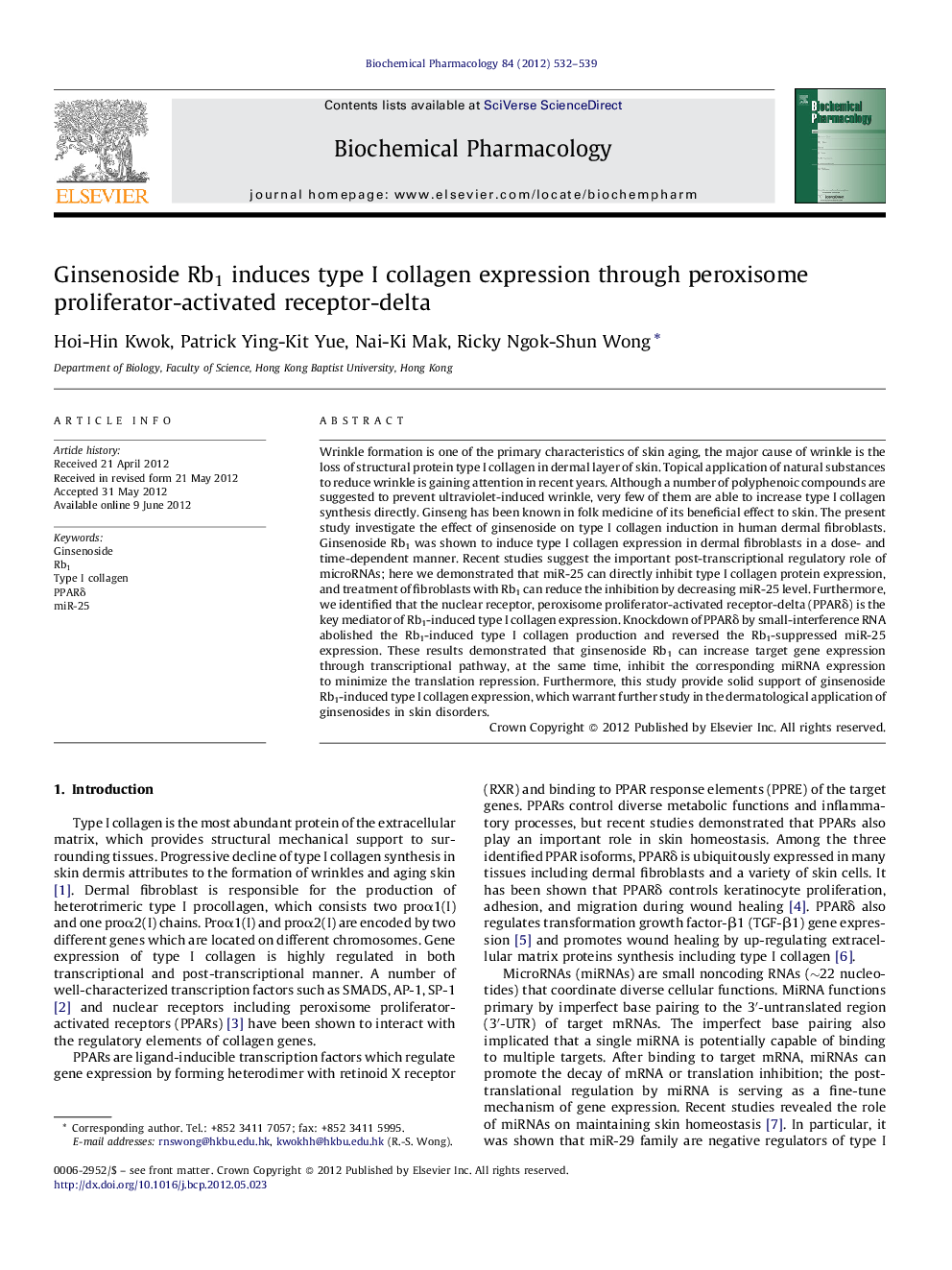| Article ID | Journal | Published Year | Pages | File Type |
|---|---|---|---|---|
| 2512527 | Biochemical Pharmacology | 2012 | 8 Pages |
Wrinkle formation is one of the primary characteristics of skin aging, the major cause of wrinkle is the loss of structural protein type I collagen in dermal layer of skin. Topical application of natural substances to reduce wrinkle is gaining attention in recent years. Although a number of polyphenoic compounds are suggested to prevent ultraviolet-induced wrinkle, very few of them are able to increase type I collagen synthesis directly. Ginseng has been known in folk medicine of its beneficial effect to skin. The present study investigate the effect of ginsenoside on type I collagen induction in human dermal fibroblasts. Ginsenoside Rb1 was shown to induce type I collagen expression in dermal fibroblasts in a dose- and time-dependent manner. Recent studies suggest the important post-transcriptional regulatory role of microRNAs; here we demonstrated that miR-25 can directly inhibit type I collagen protein expression, and treatment of fibroblasts with Rb1 can reduce the inhibition by decreasing miR-25 level. Furthermore, we identified that the nuclear receptor, peroxisome proliferator-activated receptor-delta (PPARδ) is the key mediator of Rb1-induced type I collagen expression. Knockdown of PPARδ by small-interference RNA abolished the Rb1-induced type I collagen production and reversed the Rb1-suppressed miR-25 expression. These results demonstrated that ginsenoside Rb1 can increase target gene expression through transcriptional pathway, at the same time, inhibit the corresponding miRNA expression to minimize the translation repression. Furthermore, this study provide solid support of ginsenoside Rb1-induced type I collagen expression, which warrant further study in the dermatological application of ginsenosides in skin disorders.
Graphical abstractFigure optionsDownload full-size imageDownload as PowerPoint slide
